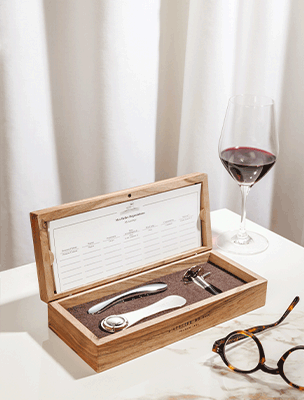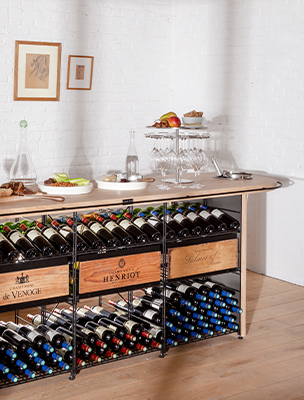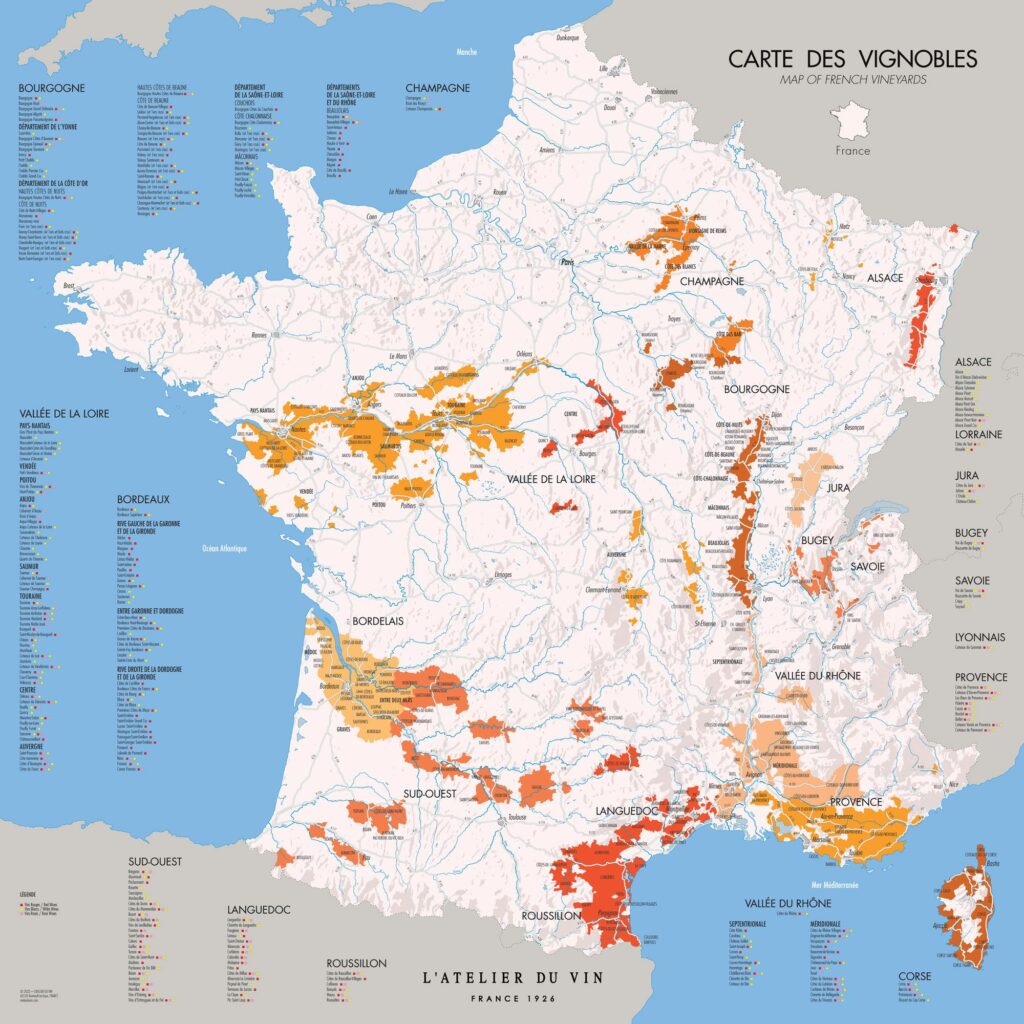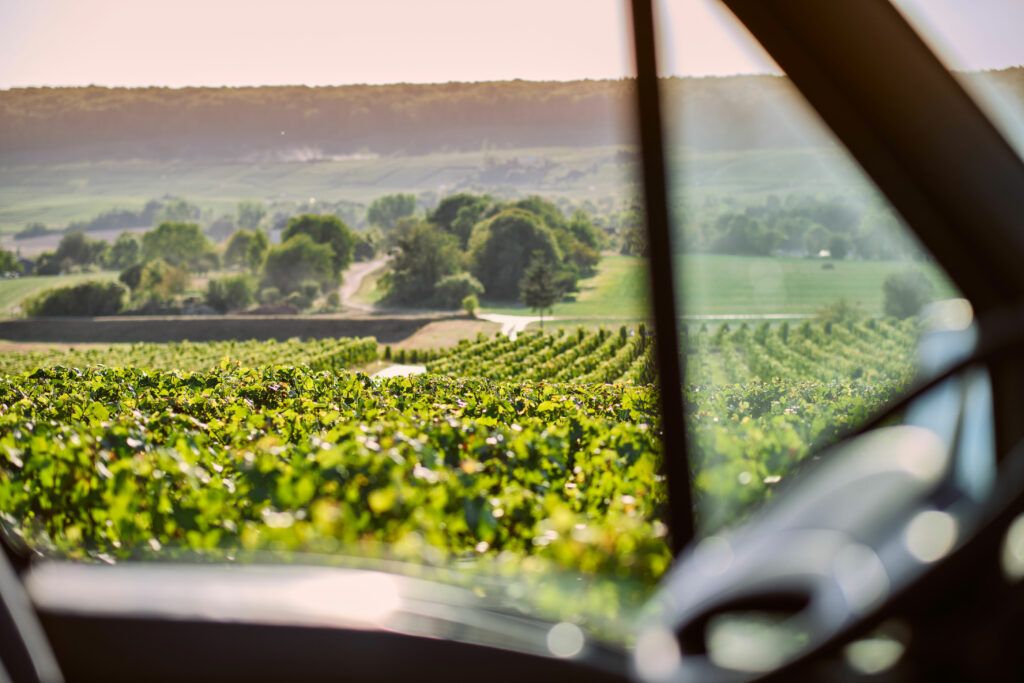
© Alexandre Couvreux
Which regional terroir does your favourite wine come from? How good is your geography when it comes to French wine regions? Can you locate the main AOC, AOP and ICP vineyards on a map of France? France is made up of many beautiful wine routes. Follow this little guide to France’s wine regions and plan each step of your next wine tour. So, embark on a journey through the vines with L’Atelier du Vin, a French manufacturer of wine tools and accessories since 1926 from father to son, to discover France’s regions and best wines.
A List of the Main French Wine Regions and Vineyards
L’Atelier du Vin’s Map of French Vineyards can be unfolded on a tasting table or proudly displayed on your wine cellar walls. It helps to situate each French wine region at a glance, locate each of their AOC vineyards and determine what types of wine they produce.
Here is an overview of France’s main wine regions:
Alsace Wine Region and Vineyards
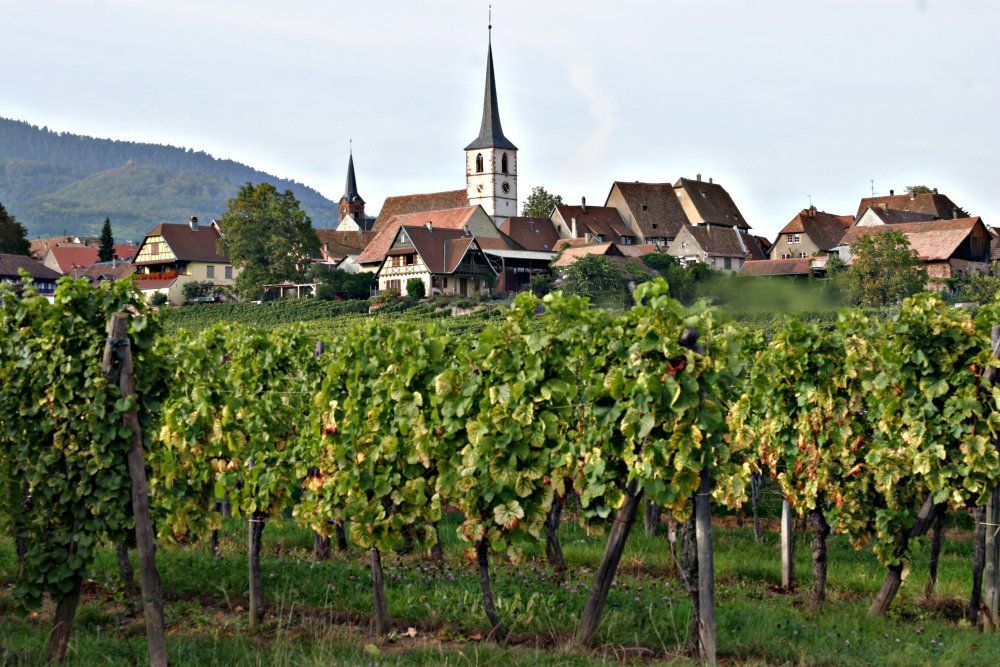
Alsace Wine Region
Alsace vineyards are renowned for their fruity, floral, dry or sweet white wines. The region stretches from Strasbourg to Mulhouse, over rolling hills between the Vosges and the Rhine.
This north-eastern wine region, characterised by its cold and dry weather, is best known for emblematic grape varieties, such as Riesling, Gewurztraminer and Muscat d’Alsace, and sparkling wine called Crémant d’Alsace.
Each year, wine lovers from around the world flock to Alsace’s charming Wine Route, to taste a Sylvaner or Edelzwicker wine.
Bordeaux Wine Region and Vineyards
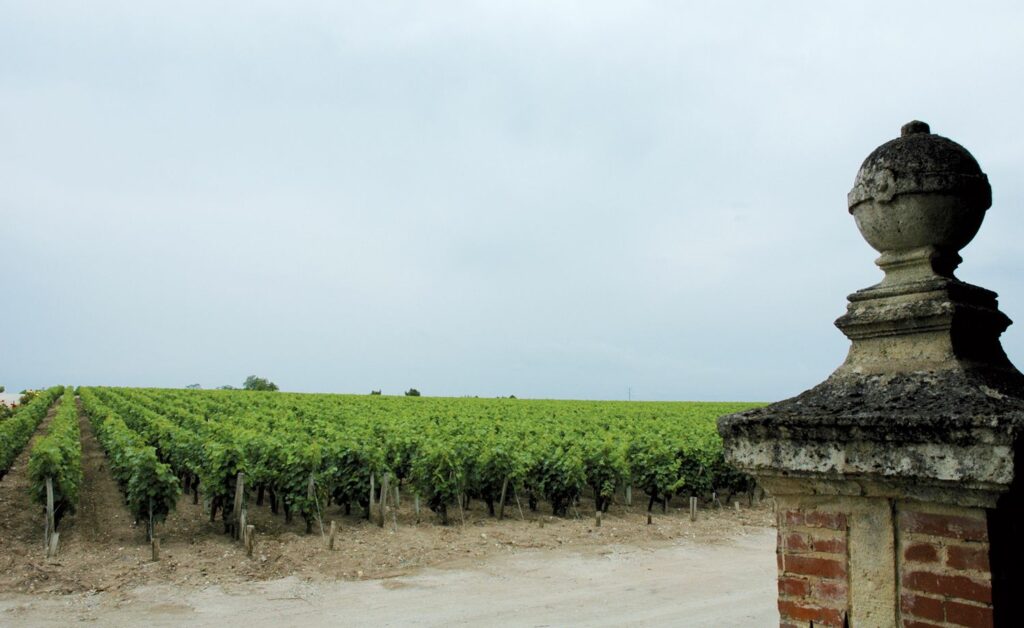
Bordeaux Wine Region
Saint-Emilion Grand Cru, Château Margaux, Loupiac, Saint-Estèphe, Cadillac… Bordeaux wines are served and enjoyed throughout the world. The Bordeaux wine region is gorged with grapes, stretching from the river Garonne, Dordogne and Gironde estuary to the Atlantic coast. It is made up of 6 local vineyards:
- Médoc,
- Entre-Deux-Mers,
- Graves, Pessac-Léognan,
- Blayais, Bourgeais,
- Sauternes, Cérons, Barsac,
- Libournais, Saint-Emilion, Pomerol.
These Aquitaine vines often grow in sandy, marly and chalky soil, in a relatively humid but mild (depending on the year) temperate oceanic climate. Wineries in Bordeaux are known as “châteaux” and include some of the most prestigious vineyards in the world. Among the many AOC wines the Bordeaux wine region has to offer, the tannic and aromatic red wines are the most representative, especially those produced from Cabernet-Sauvignon, Merlot and Cabernet-France grapes. White wines range from very dry to very sweet, such as Sauternes, depending on the combination of grape varieties such as Sauvignon, Muscadelle and Semillon.
Burgundy Wine Region and Vineyards
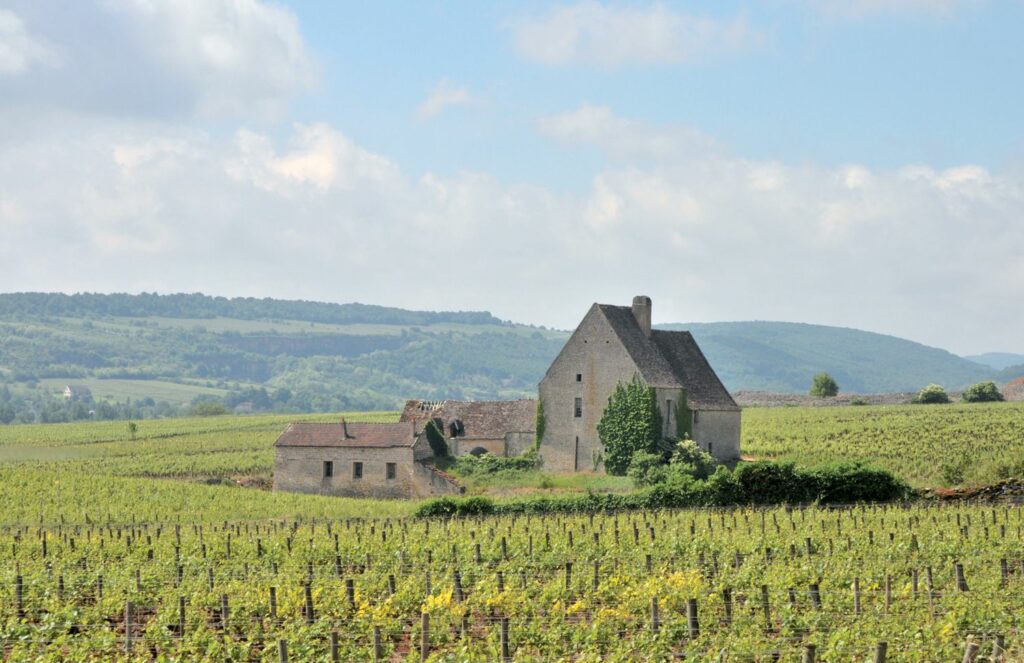
Burgundy Wine Region
The Burgundy wine region stretches across the Burgundy coast, along the Saône from Dijon to Lyon, as well as the Côte des Bar near Auxerre (northwest of Dijon). This large wine region spans across 4 departments: Yonne, Côte d’Or, Saône-et-Loire and Rhône. More specifically, the Burgundy vineyards are as follows:
- Beaujolais
- Mâconnais
- Côte Chalonnaise
- Côte de Beaune, Hautes-Côtes de Beaune
- Côte de Nuits, Hautes-Côtes de Nuits
- Chablis
- Auxerrois
Nuits Saint-Georges, Pommard, Côte de Nuits, Meursault, Romanée-Conti… This beautiful region is home to exceptional Grand Crus and vintages, considered by some oenologists to be among the best in the world. Aromas and tastes can vary greatly from one vineyard to the next, known as the ‘climats of Burgundy’. Burgundy red wines, mainly made from Pinot Noir and Gamay grapes, boast round and supple red fruit and spice aromas, and a fleshy body that softens with time in a wine cellar. The most prestigious Burgundy white wines are produced from Aligoté and Chardonnay grapes, which bring finesse and freshness, as well as flower, white fruit and citrus notes. Finally, the few rosé wines made in the Burgundy terroir are both delicious and lively.
Bugey Wine Region and Vineyards
The Bugey wine region is surrounded by the Ain and the Rhône, to the west of the Savoy region and to the south of the Jura. It includes Belley, Culoz, Ambérieu-en-Bugey, Lagnieu, Cerdon and Bourg-en-Bresse. The Bugey vineyards are nestled at the foot of the mountains, in a rugged and green landscape, and enjoy an oceanic climate, with a very cold winter and a hot summer. Bugey white wines are traditionally made with Altesse and Roussette (also grown in Savoy) grapes, although many local whites are made with Chardonnay. The vinification process produces dry, lively and fragrant wine. Bugey red wines are always made with one grape variety. Those extracted from Pinot Noir or Gamay are light and complex, whereas local vintages made with Mondeuse stand out for their tannins.
Champagne Wine Region and Vineyards
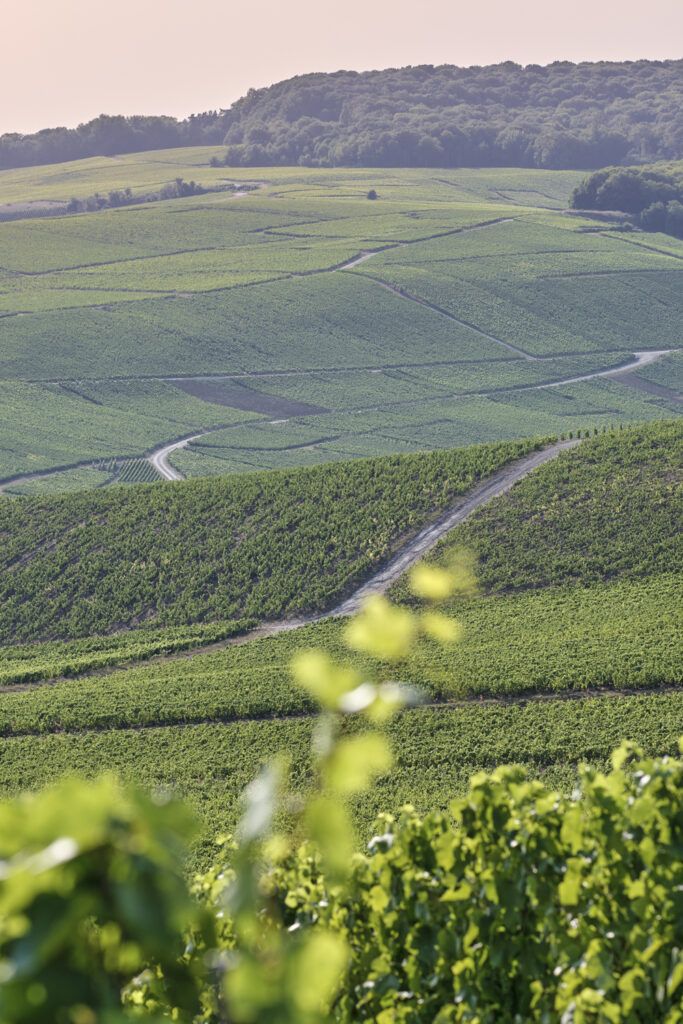
Champagne Wine Region
This extraordinary, world-renowned wine region is located around Reims, Épernay, Sézanne, Vitry-le-François and Troyes. It is made up of the following local Champagne vineyards:
- Côte de Blancs
- Montagne de Reims
- Côte de Sézanne
- Vallée de la Marne
- Côte des Bar et Vignobles de l’Aube
- Massif de Saint-Thierry
- Vallée de l’Ardre
- Butte Montgueux
- Vitry-le-François
The region benefits from a temperate climate, which is both oceanic and continental, and chalky, clay and limestone soil. The combination of these elements produces exceptionally good-quality sparkling wine. The finest world-renowned Champagne wines, made from Pinot Noir, Pinot Meunier and Chardonnay, are named exclusively after the region and produced entirely in Champagne. White or rosé champagne, which can be brut, demi-sec or dry, varies from fresh, with floral and citrus notes, to voluptuous with candied or cooked fruit notes and a touch of spices, depending on the blend, year or age. Wine lovers and tourists can also visit the chalk cellars in which the Champagne vintages or Grands Crus Classés are stored.
Corsica Wine Region and Vineyards
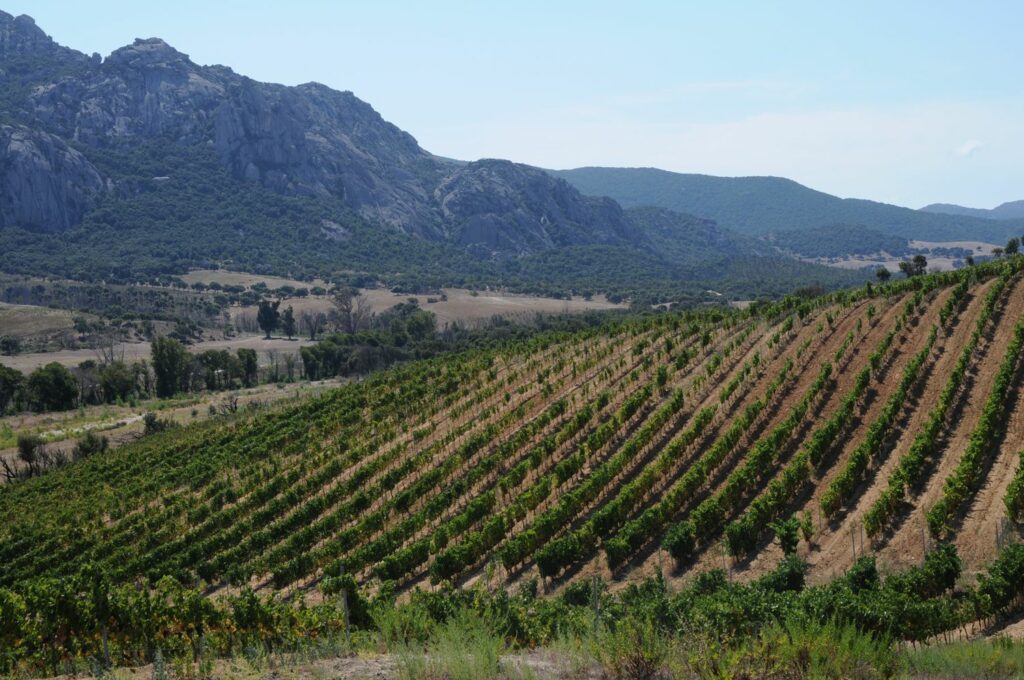
Corsica Wine Region
Corsican vineyards are scattered around the island and bathed in the Mediterranean sun, growing in granite or schist soil. This unique ecosystem is what makes Corsican wines so subtle. A lot of the island’s white wines are made from Vermentio grapes, or surprisingly delicate Muscats. Corsican red wines are made from a combination of Nielluccio or Sciaccarello grapes and Syrah or Grenache, to create a perfect balance between tannins, aromas and spiced notes.
Jura Wine Region and Vineyards
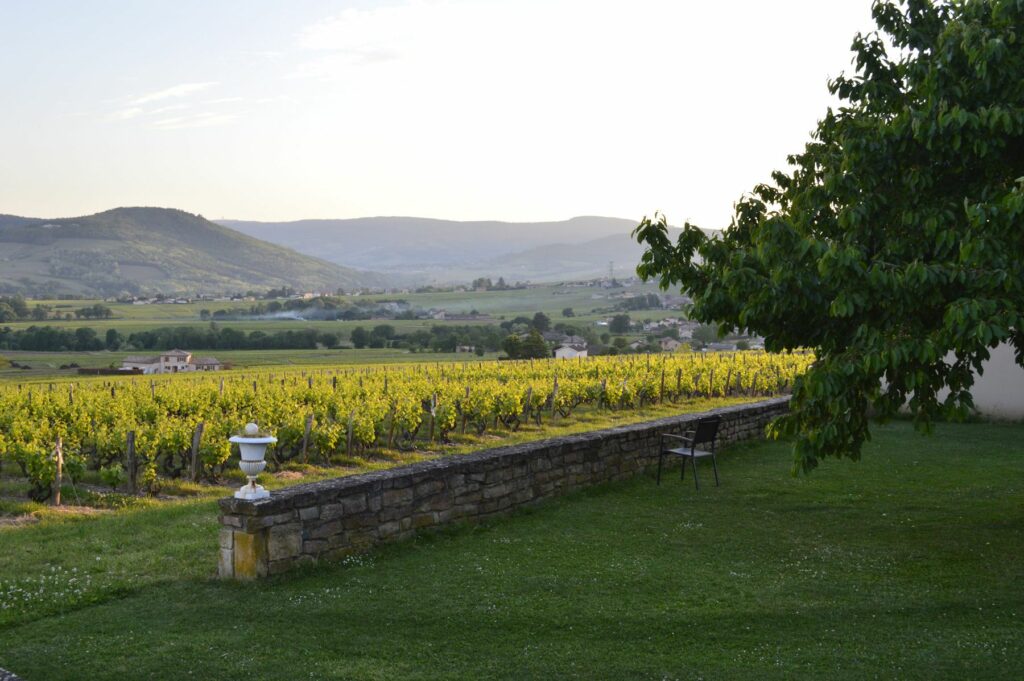
Jura Wine Region
The Jura wine region, known as the ‘Bon Pays’, stretches over the mountains from the north of Arbois and Salins-les-Bains to the south of Saint-Amour. The terraced vineyards grow local Poulsard (or Ploussard), Savagnin and Trousseau grapes, which resist the freezing winters and spring frosts, combined with Chardonnay for white wine and Pinot Noir for red wine. Jura vineyards are renowned for their yellow wine, fermented in vats and aged in oak barrels for at least 6 years, as well as their straw wine, made from dried grapes harvested late and then pressed and fermented. All types of still and sparkling wines are also made with local grapes, as well as Macvin du Jura, a local liqueur.
Languedoc Roussillon Wine Region and Vineyards
The Languedoc and Roussillon wine region spreads across a large Mediterranean territory, from the Pyrénées Orientales and Aude to Herault and Gard. It also stretches inland, encompassing Corbières, Minervois, Larzac, the Pic Saint-Loup and Millau, making it the biggest wine region in France. It is made up of many AOC vineyards that each have their own identity and distinctive features.
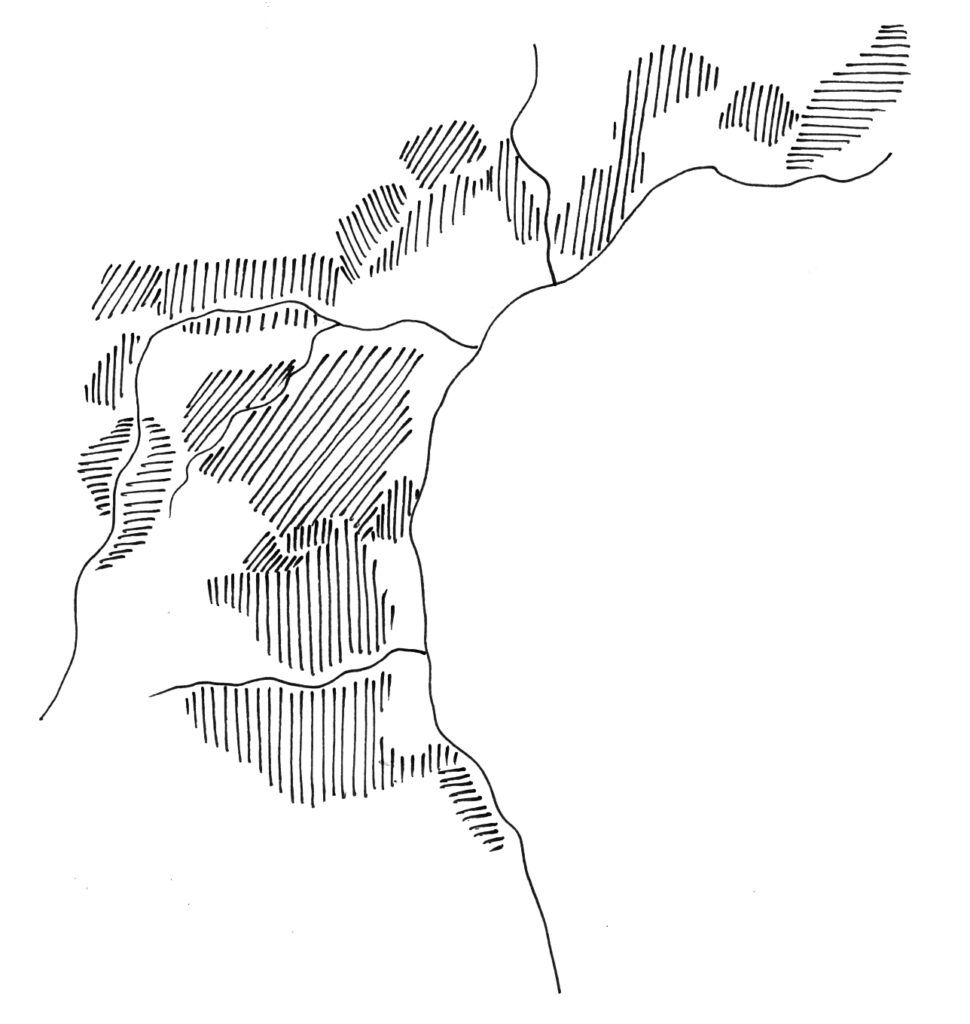
Languedoc Roussillon Wine Region
The mild Mediterranean weather and the continental and sea air provide the perfect conditions for growing grapes. In fact, the region has been a natural environment for vines since Ancient times, which is why there is such a wide range of grape varieties in these terroirs. All types of still and sparkling wines are produced here, including several natural sweet wines, Muscat de Frontignan and the ancestral Blanquette de Limoux dating back to the Middle Ages.
Lorraine Wine Region and Vineyards
Lorraine wines are produced in small vineyards scattered between Metz, Toul and Saint-Mihiel, as well as in tiny terroirs by the Seille and Moselle rivers. The vineyards are mostly located on high ground. Winegrowers in Lorraine have planted grape varieties typical of north-east France, such as Auxerrois, Pinot Noir and Pinot Gris, Gamay, Riesling, Gewurztraminer or Muller-Thurgau, producing many fine red, white and rosé wines.
Lyon Wine Region and Vineyards
The Coteaux du Lyonnais AOC vineyards are located south-west of Lyon, between the Rhône Valley and Beaujolais region. Lyon wine is produced from Gamay and Chardonnay, and the red, white and rosé wines are fresh, light and fruity.
Provence Wine Region and Vineyards
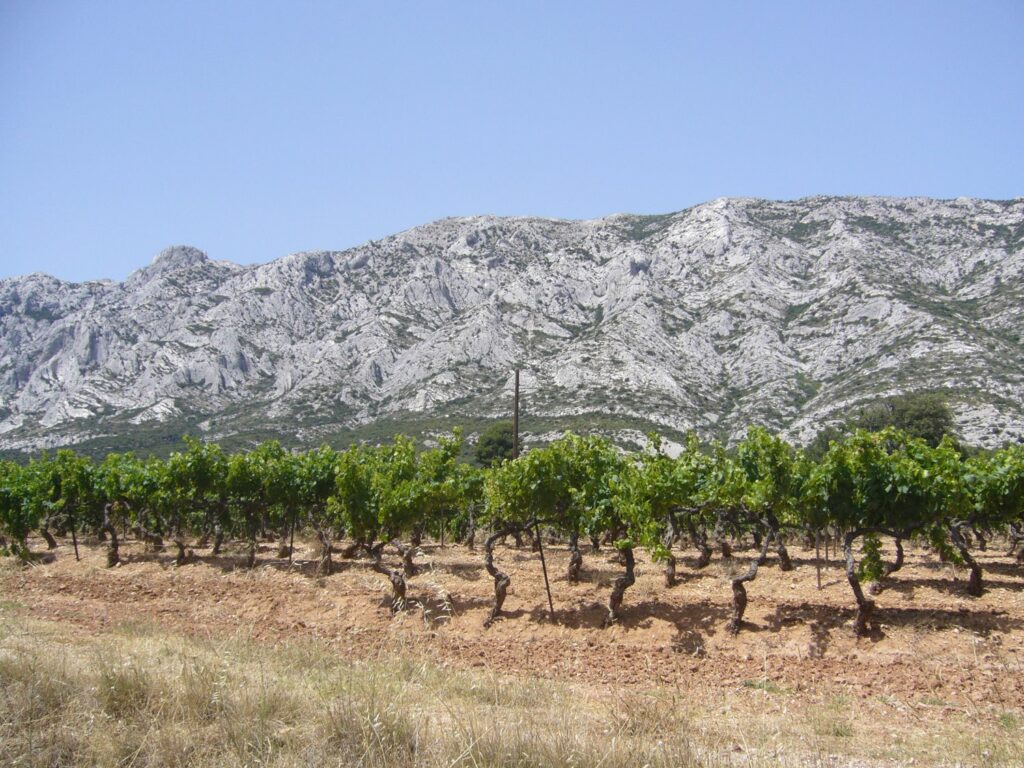
Provence Wine Region
The beautiful vineyards of Provence are spread over a large area, from the Rhône to the west, the Var to the east, the Durance to the north and the Mediterranean to the south. More than twenty grape varieties are cultivated around the Côte d’Azur terroirs and towns. Provence wine tends to be characterised by a dry and fruity rosé, to be served chilled, as well as a few nice red surprises and the occasional white wine.
Savoy Wine Region and Vineyards
The Savoy wine region, from south of Lake Leman to the north of Isère, stretches over several villages with mountain vines at the foot of the French Alps. This wine region includes several vineyards:
- Bas-Chablais
- Côte d’Arve
- Avant-Pays de Savoie, Rives du Rhône
- Cluse de Chambéry
- Combe de Savoie
Typical Savoy grape varieties include Chesselas, Gringet, Jacquère, Roussanne, as well as Gamay and Mondeuse Noire for ruby-coloured red wines, and Altesse to make Roussette Savoyarde. White Savoy wine tends to be straw-coloured and quite light, fresh and fragrant.
South-West Wine Region and Vineyards
The South-West wine region spreads from the Pyrenees to the south, the Landes and Atlantic coast to the west, Dordogne to the north, and the Rodez vineyards to the east. Bayonne, Pau, Toulouse, Albi, Agen, Cahors, Quercy, Marmande, Bergerac… It includes all the most famous towns in south-west France. Monbazillac, Buzet, Madiran, Gaillac, Jurançon: so many beautiful bottles to open or store in a wine cellar for a few more years!
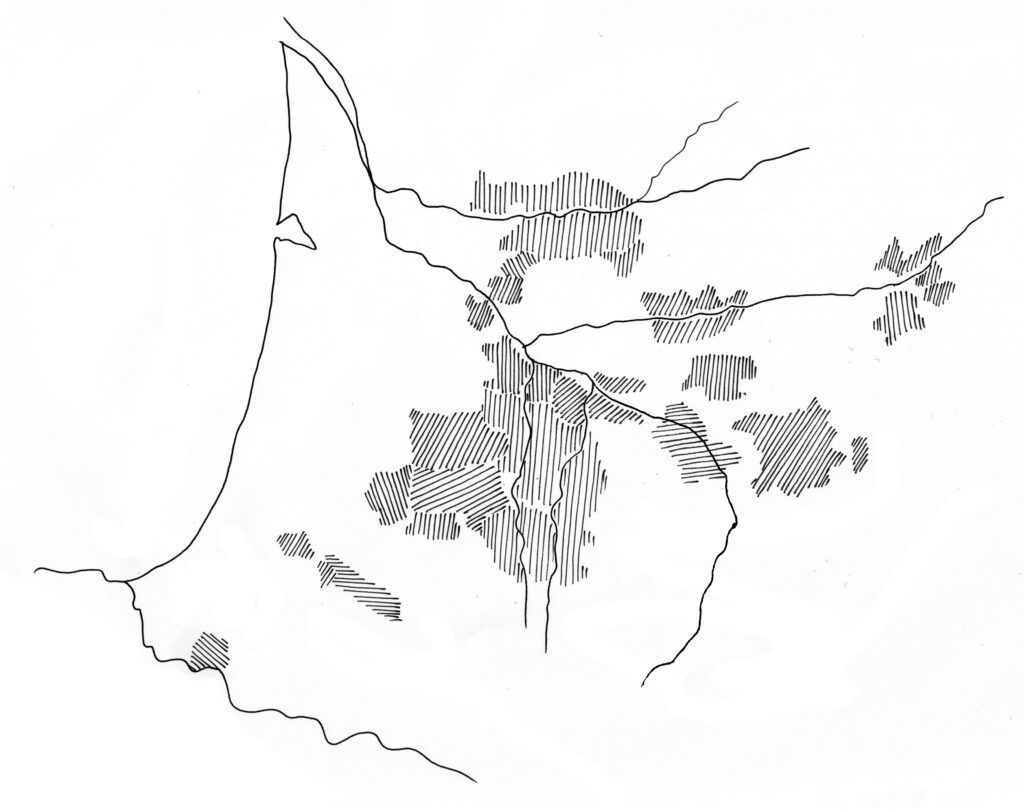
South-West Wine Region
The oceanic climate and nearby mountains, forests, rivers and streams, create a unique and naturally rich environment for South-West winegrowers, who associate classic Bordeaux grape varieties with ancestral regional ones, such as Tannat, Négrette, Abouriou, Carmalet, Baroque, Manseng, among others. Wines from the South-West, including some still and sweet wines, are particularly sought after by sommeliers and cellarmen.
Loire Valley Wine Region and Vineyards
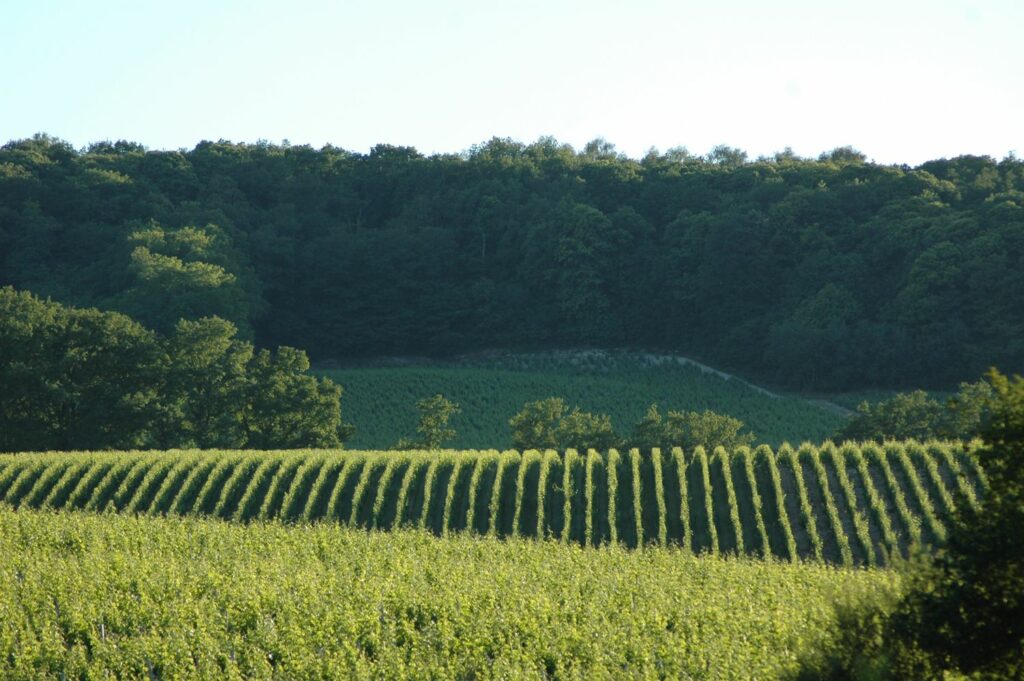
Loire Valley Wine Region
The Loire Valley vineyards run along the rivers of western France, from the high springs of the Massif Central, to the mouth of the Nantes estuary on the Atlantic coast. This wine region, including Roanne, Moulins, Sancerre, Orléans, Tours, Poitiers, Angers and Nantes, can be divided into several large vineyards and AOCs:
- Auvergne
- Centre-Loire, Orléanais
- Touraine
- Saumur
- Anjou
- Poitou
- Vendée
- Pays Nantais
The Loire Valley hillsides, shaped by the river and its tributaries, benefit from an oceanic and continental climate, as well as a rich variety of granite, limestone and chalk soil. Winegrowers cultivate different grape varieties, such as Muscadet in the Nantes area, Chenin de Vouvray, Cabernet d’Anjou, Gamay in Tourraine, and many others, depending on the local vineyards’ traditions and ecosystems. Dry, semi-dry, tannic, mellow, sweet: the Loire Valley Grand Crus offer a whole range of aromatic white, red, rosé, still and sparkling wines.
Rhône Valley Wine Region and Vineyards
The Rhône Valley wine region follows the river and its tributaries, as its name suggests. It includes northern vineyards (from Vienne to Valence), the Diois vineyards on the Drôme riverbanks and southern vineyards (from Montélimar to Avignon and Durance).
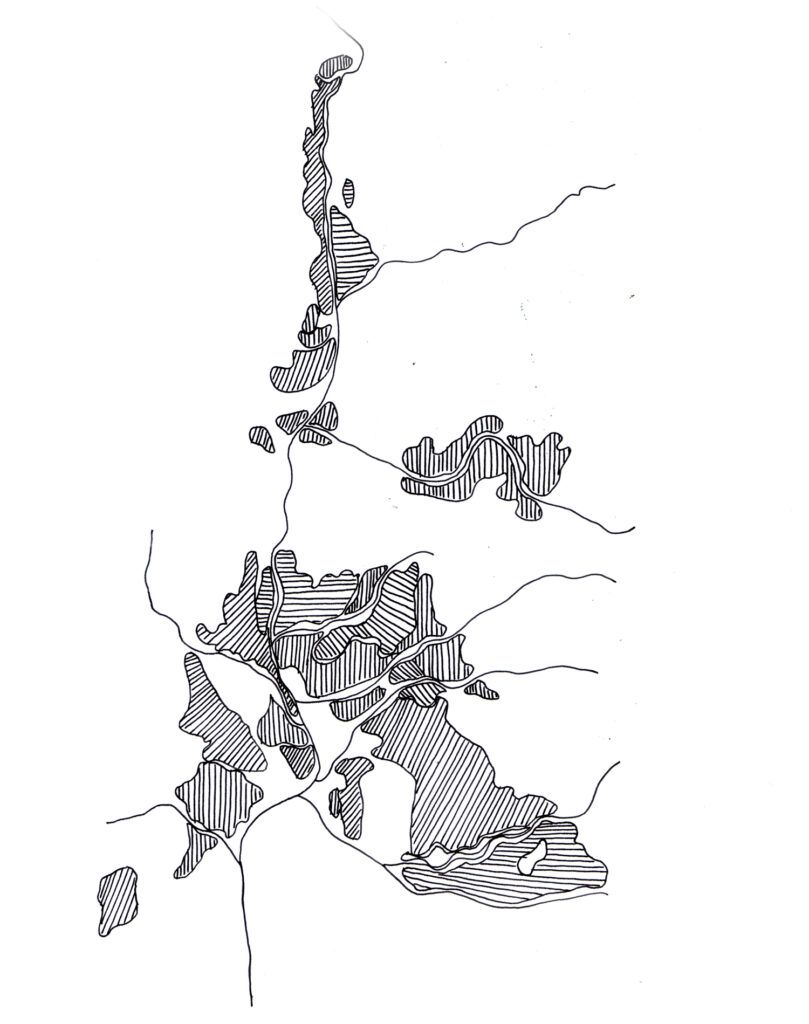
Rhône Valley Wine Region
The northern vines, cultivated on steep terraces, grow several grape varieties, including Syrah for an exceptional red wine, as well as Viognier, Roussanne and Marsanne for a dry and aromatic white wine. Crozes-Hermitage, Saint-Joseph… There are plenty of prestigious labels in the region! The southern vines benefit from the Mediterranean weather and are home to typical grape varieties, in clay, limestone, pebble and sand soil. Wine lovers will enjoy the delicious natural sweet wines, fruity rosés, reds full of character and the eternal Chateauneuf-du-Pape.


